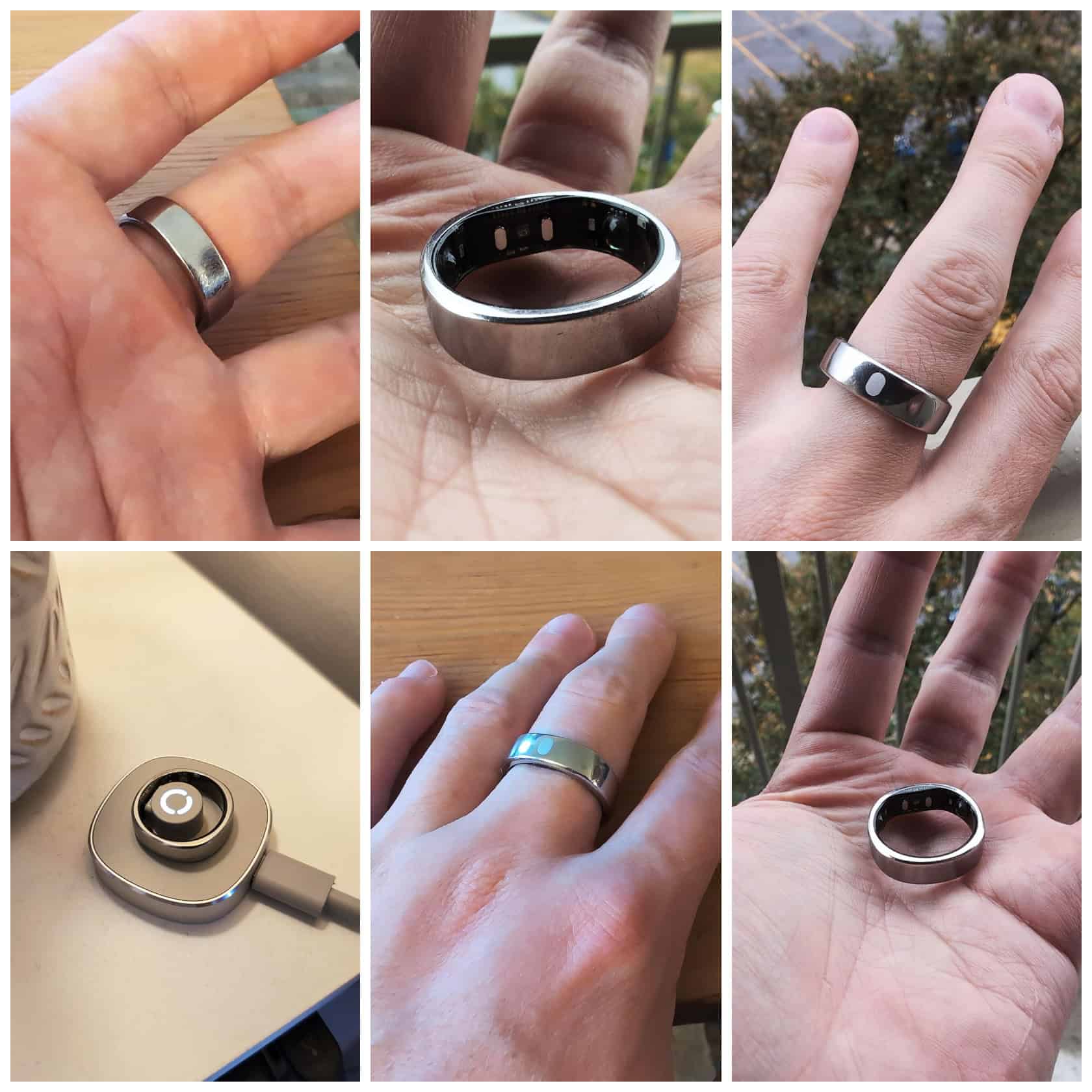Ever look at the fancy Oura Ring 4 or the new Samsung Galaxy Ring and think, “I’d love to get nerdy with my health data, but not for $350 plus a subscription”?
I get it. That’s why the RingConn Gen 2 Air caught my eye. At just $199 and with zero monthly fees, it promises to deliver a lot of the same high-tech health tracking.
But can a budget smart ring really keep up with the premium players in 2025?
I’ve been testing it for a few months, and I’m ready to walk you through all the geeky details. Let’s see if this smart ring deserves a spot on your finger.
Key Takeaways
The Ringconn Gen 2 Air costs $199, making it $150 cheaper than the Oura Ring 4 and $200 cheaper than the Samsung Galaxy Ring, while matching the $199 Amazfit Helios Ring. It launched on April 4, 2025, with no subscription fees.
The battery lasts up to 10 days, with real-world tests showing a solid 8 days of use per charge, which beats the Oura Ring 4 (about 6-7 days) and the Samsung Galaxy Ring (6 days). A full recharge takes about 90 minutes with its charging dock.
Its health tracking is solid for daily wellness, covering heart rate, SpO2, sleep stages, and body temperature. However, heart rate accuracy during intense workouts can lag behind an Apple Watch by 20-30 BPM.
Made from stainless steel and epoxy resin, it weighs between 2.5 and 4 grams and has a strong waterproof rating of 10ATM (100 meters). It’s ironically heavier than the original Gen 2, which is made of lighter titanium.
The RingConn app works on both iOS and Android but requires manual syncing and only supports one health platform (like Apple Health or Google Fit) at a time. It’s missing advanced features like automatic workout detection found in competitors.
Table of Contents
Design and Build Quality Overview
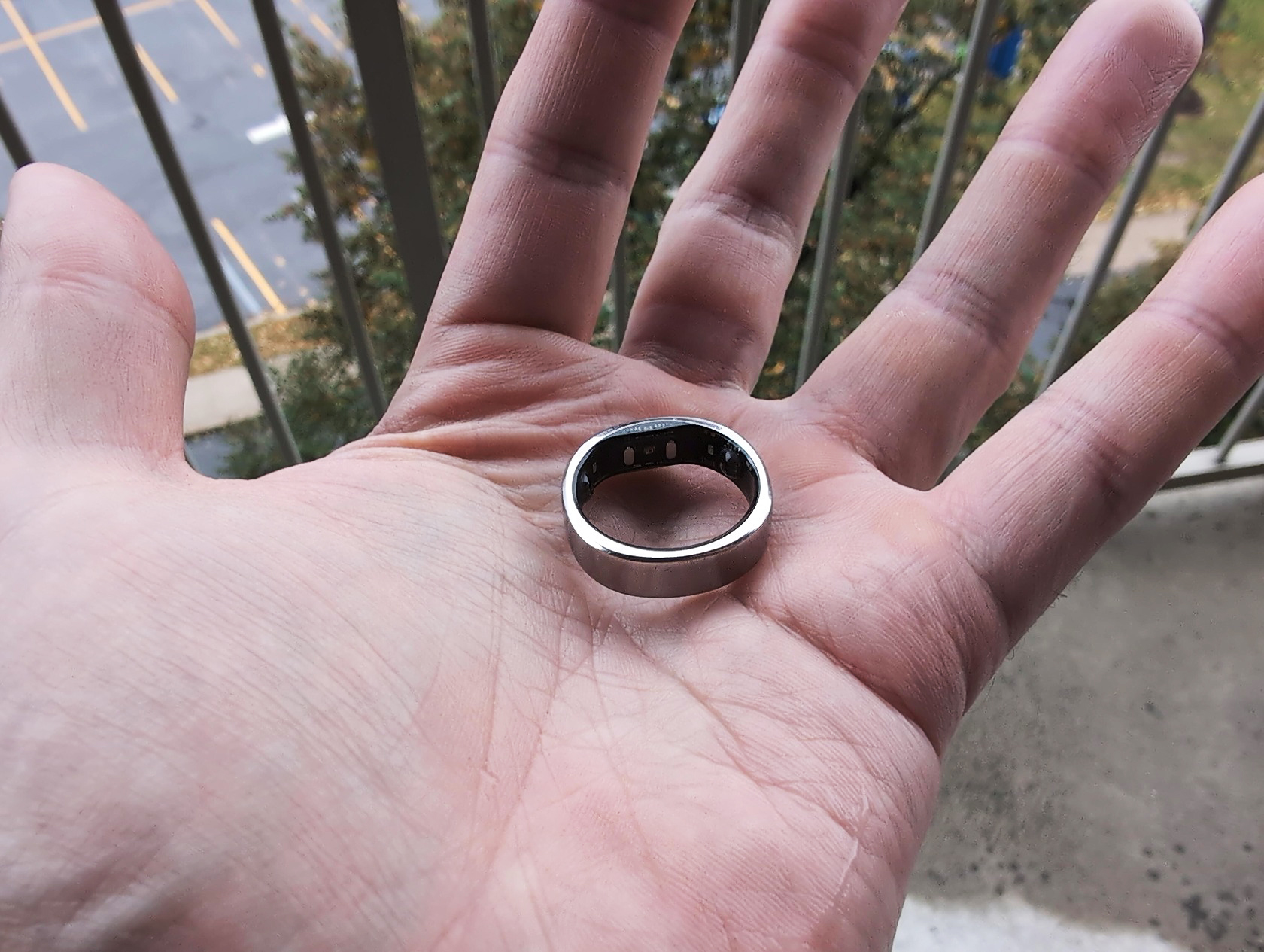
The RingConn Gen 2 Air is built from stainless steel and ceramic, giving it a solid feel that’s still light on your finger. Its slim profile is designed for comfort, whether you’re typing all day or tracking your sleep all night.
What Materials Are Used and How Durable Is It?
The main body is made of stainless steel, which makes the Gen 2 Air both tough and lightweight. I’ve been wearing the Galaxy Silver model, and it’s held up great, with only a few minor scuffs after months of daily wear.
The inside is lined with a smooth epoxy resin, which keeps it comfortable against your skin. The ring carries a waterproof rating of 100 meters (10ATM), matching top competitors like the Oura Ring 4 and letting you swim or shower without any worries. Drop tests from a few feet have only resulted in tiny micro-scratches, proving it’s durable enough for everyday life.
If you’re extra cautious, you can buy silicone protectors for about $29.90 to keep it pristine during heavy gym sessions.
How Comfortable Is the Fit?
This thing is so light, you’ll probably forget it’s there. Weighing between 2.5 and 4 grams, it’s about a gram lighter than the Oura Ring 4 at every size. That makes a difference when you’re wearing it 24/7 for sleep tracking or during long coding sessions.
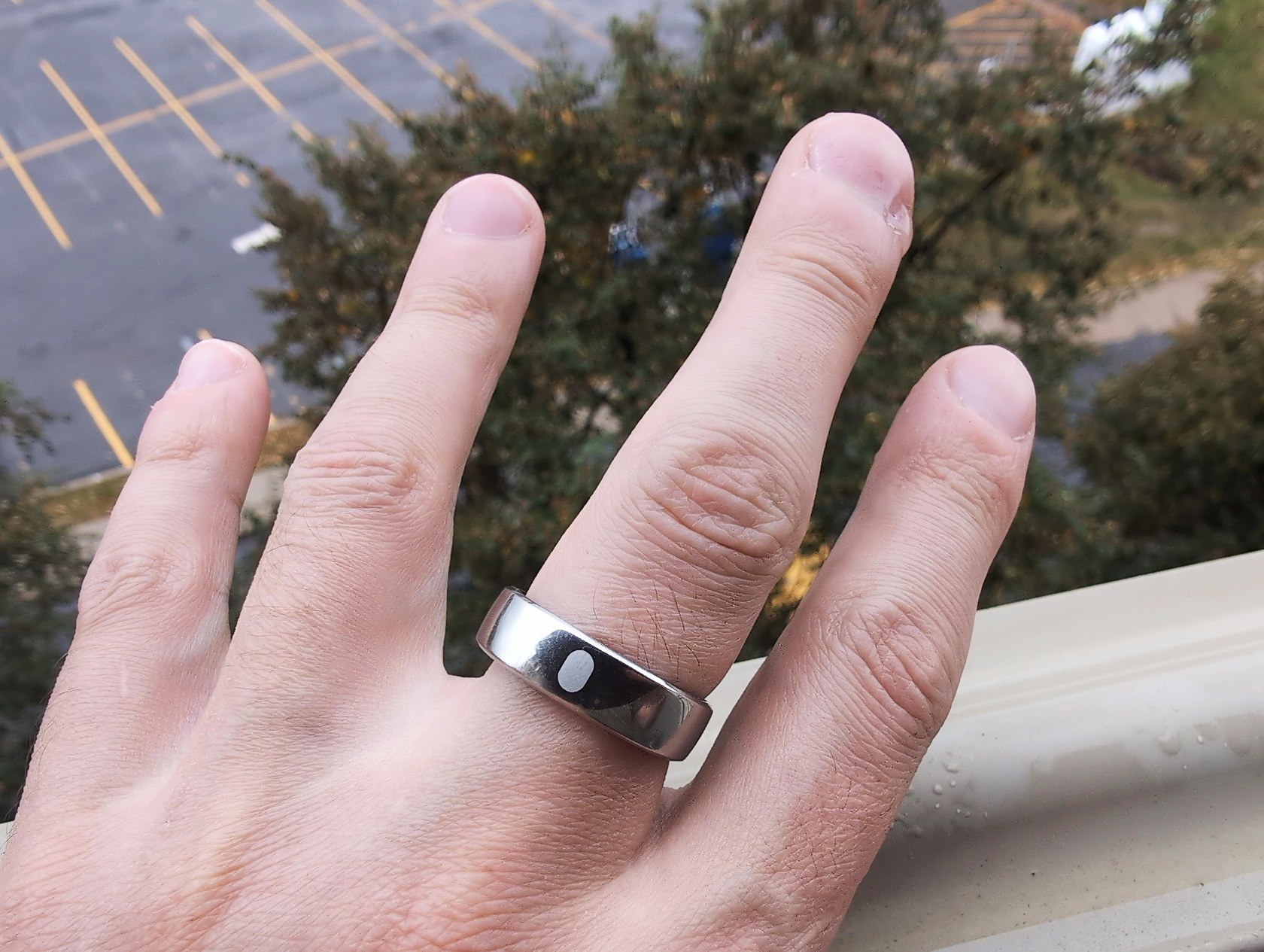
Even with the small sensor bump inside, it stays comfortable. Some users on Reddit mention the bump can leave a small indent after a week of continuous wear, but most agree it’s not a dealbreaker. RingConn includes a sizing kit to help you find the perfect fit before you buy, which is a huge plus. Most people find the index or middle finger of their non-dominant hand offers the best balance of comfort and accuracy.
Key Features of RingConn Gen 2 Air
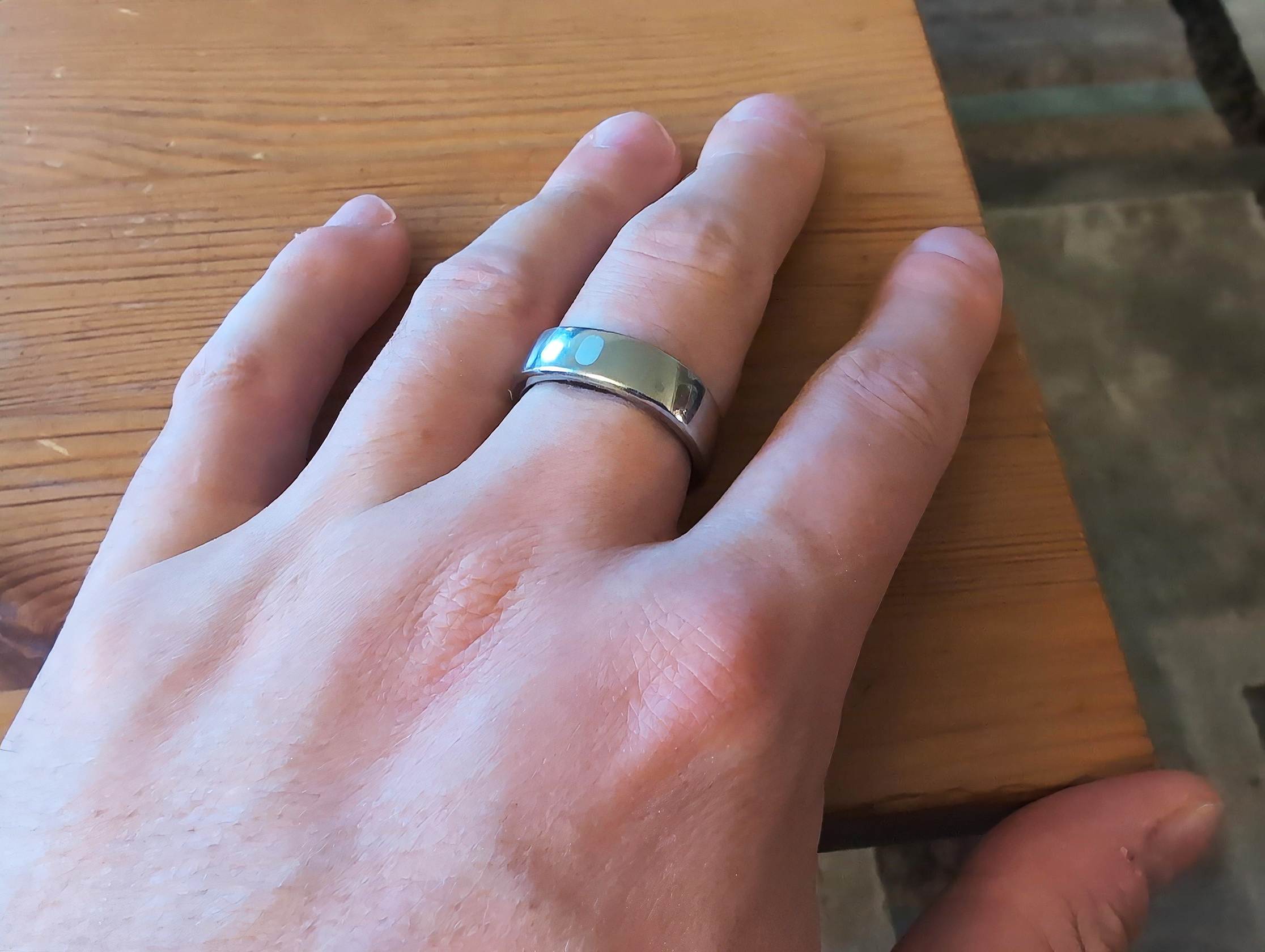
The RingConn Gen 2 Air is packed with sensors to keep an eye on your health. It uses photoplethysmography (PPG) sensors to track your heart, stress, movement, and sleep patterns right from your finger.
How Accurate Is the Heart Rate Monitoring?
For resting and sleeping heart rate, the Gen 2 Air is quite accurate. Tests show its readings are usually within 5 to 10 beats per minute (BPM) of the Apple Watch Ultra 2.
However, it struggles during intense exercise. During HIIT sessions or sprints, its numbers can be 20 to 30 BPM lower than a dedicated fitness tracker like a Garmin or Apple Watch. The PPG sensors have a tough time keeping up with rapid changes in heart rate. For steady-state activities like walking, though, the data is reliable.
“During runs, my pulse dipped on screen but felt like it was pounding out a metal riff.” – one reviewer noted, highlighting the lag during sudden intensity spikes.
If you’re a data-focused athlete, you’ll want a chest strap for serious training. But for general health metrics and daily activity, it’s more than good enough.
How Does Blood Oxygen (SpO2) Tracking Work?
The Gen 2 Air uses its photoplethysmography (PPG) sensors, which shine red and infrared light into your finger to measure your blood’s oxygen saturation. This process is completely automatic and runs 24/7, so you don’t have to manually start a reading.
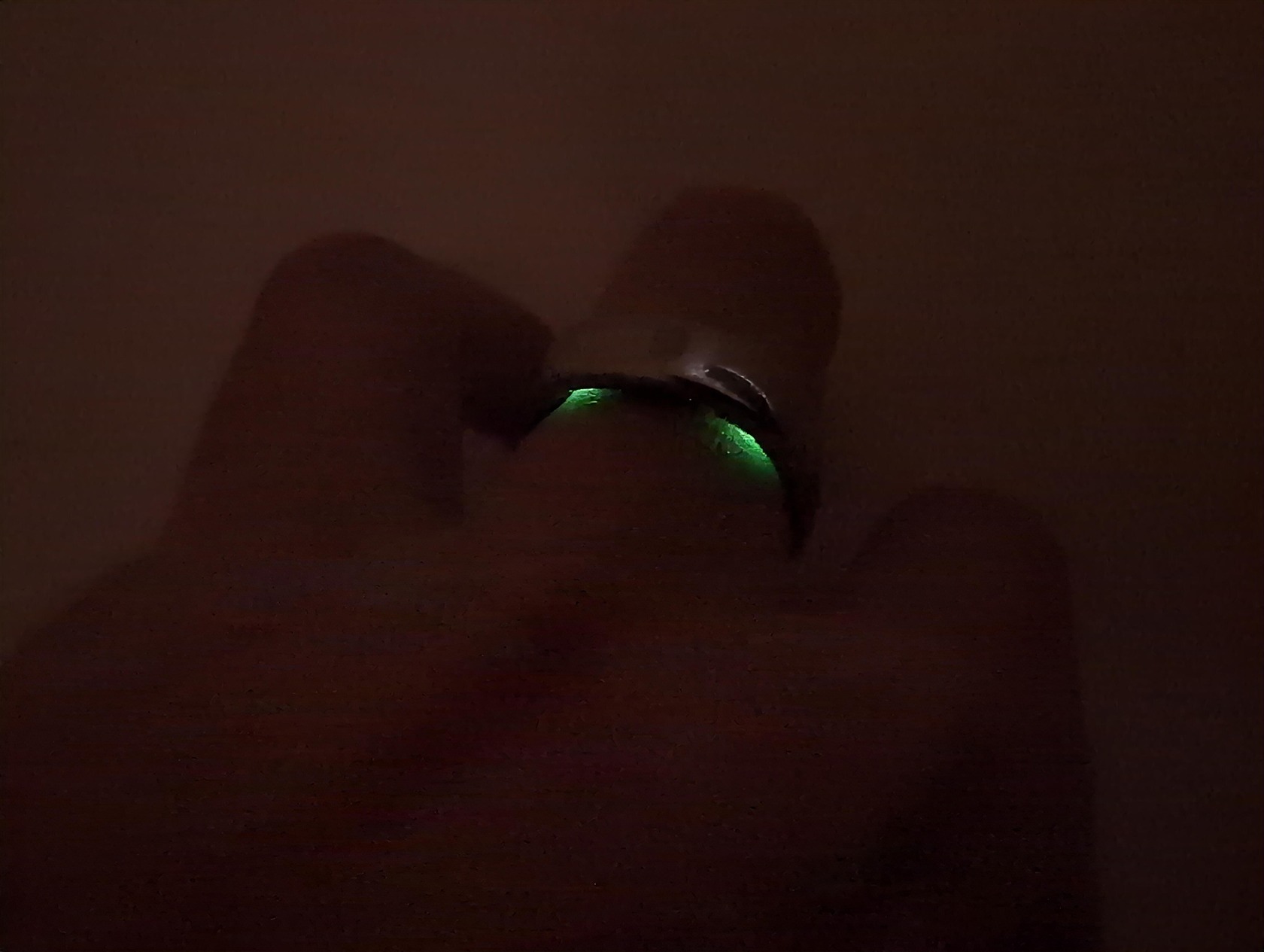
These SpO2 stats are a key part of your overall wellness balance score and are especially important for analyzing your sleep quality. All the data syncs via Bluetooth to the RingConn app, giving you a continuous look at your vitals on both iOS and Android devices.
What Are the Sleep Tracking Capabilities?
This is where the RingConn Gen 2 Air really shines. It provides a detailed breakdown of your sleep stages, showing how much time you spent in REM, deep, and light sleep. The sleep scores I got were consistently in line with what my Google Nest Hub and Apple Watch reported.
The app gives you a nightly score and tracks key metrics like heart rate variability (HRV), respiratory rate, and your sleeping heart rate. What’s fantastic is that you get all of this detailed analysis without any subscription fees, which is a huge advantage over Oura.
One key feature is missing, though: sleep apnea detection. That capability is reserved for the more expensive $299 Ringconn Gen 2 model.
How Is Body Temperature Monitored?
A thermal sensor inside the ring tracks your skin temperature around the clock. The data appears in the “Vitals” section of the app after you sync it. I found it surprisingly helpful, as fluctuations in my temperature often matched up with nights of poor sleep or feeling stressed out.
The app will even flag these changes as “minor outliers” to bring them to your attention. It’s a useful metric for spotting early signs of your body being under strain. Just remember you have to sync the ring manually in the app, as it doesn’t update in the background.
How Does It Track Daily Activity and Steps?
The ring uses a 3-axis accelerometer to handle all of its movement tracking. In the app, you’ll see your daily step count, calories burned, active time, and how many minutes you’ve been standing. An activity score from 1 to 100 gives you a quick snapshot of your day.
While it does a decent job automatically detecting walks and runs, the workout features are pretty basic. It only offers a few manual tracking modes, like running and cycling. Post-workout data is limited, you won’t get GPS-based stats like distance or pace unless you carry your phone.
How Is Calorie Burn Measured?
The Ringconn Gen 2 Air estimates your daily calorie burn by combining your step count, heart rate, and general activity level using its AI-powered algorithms. In my tests against an Apple Watch Ultra 2, the daily calorie numbers were very close, usually off by only 20-30 calories.
You can see your total burn in the activity section of the app. For better accuracy, you can manually log workouts like walking or cycling. While it handles the basics well, it doesn’t offer advanced metrics like VO2 max that you’d find on high-end fitness trackers.
Battery Life and Charging Details
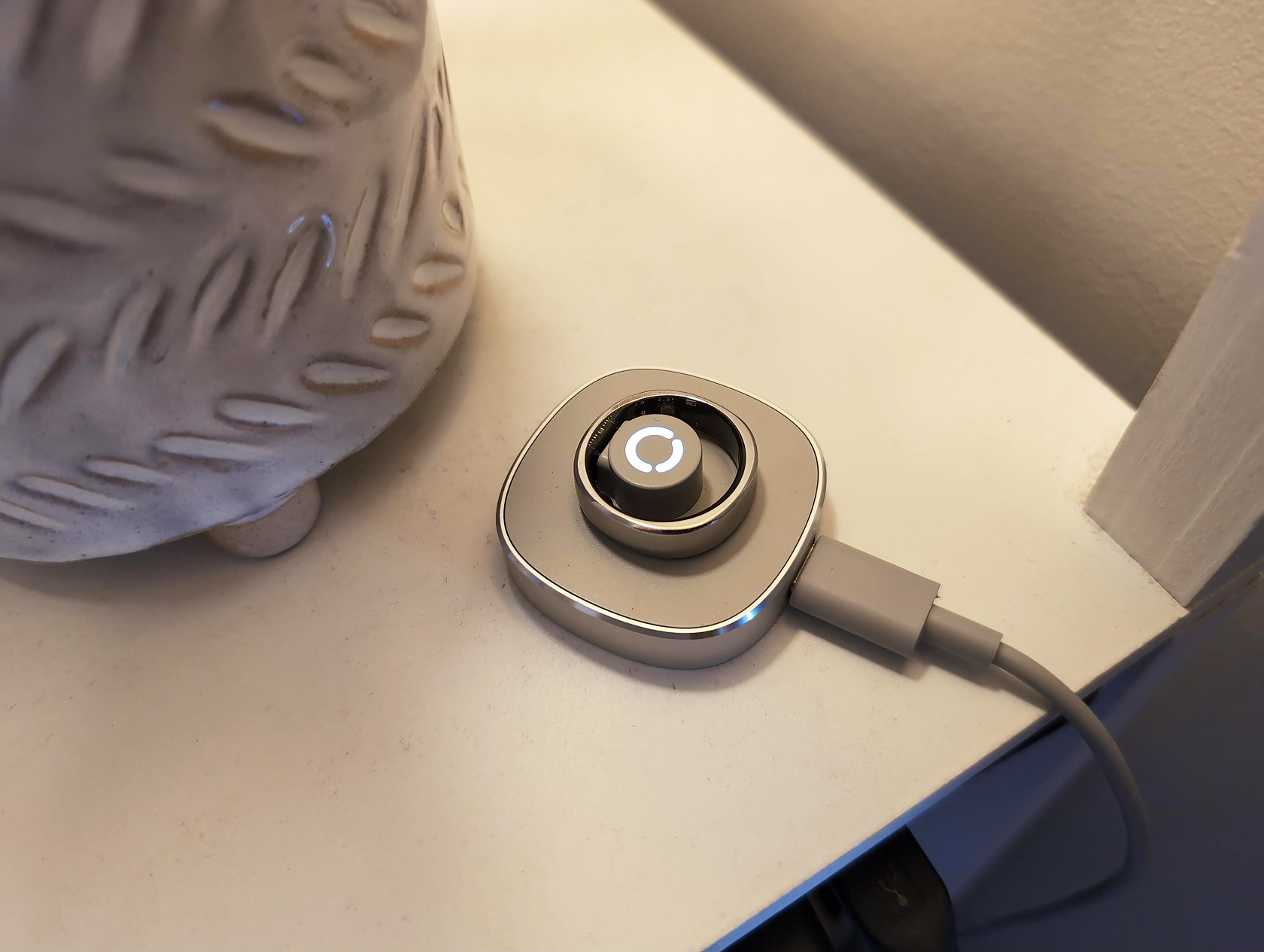
The RingConn Gen 2 Air is a powerhouse when it comes to battery. It’s designed to be worn for over a week without needing a charge, which is a huge convenience for 24/7 health tracking.
How Long Does the Battery Last?
Ringconn advertises up to 10 days of battery life, and in real-world tests, it consistently hits around 8 to 10.5 days on a single charge. This is a major advantage over its top competitors.
| Smart Ring | Advertised Battery Life | Real-World Battery Life (Approx.) |
|---|---|---|
| Ringconn Gen 2 Air | 10 days | 8-10 days |
| Oura Ring 4 | 7 days | 5-7 days |
| Samsung Galaxy Ring | 6 days | 5-6 days |
| Ultrahuman Ring Air | 5 days | 4-5 days |
This long battery life makes it perfect for tracking multiple nights of sleep without worrying about your device dying.
How Fast and Convenient Is Charging?
Charging is quick and easy. The ring goes from empty to full in about 90 minutes using its proprietary USB-C charging dock. Your phone will get a notification as soon as it’s done.
The main drawback is that unlike the more expensive Gen 2 model, the Air doesn’t come with a portable charging case. The Gen 2’s case can recharge the ring up to 15 times on the go. With the Air, you’ll need to keep its charging puck with you when you travel.
You’ll never miss a notification; your phone taps you as soon as charging is done.
Compatibility and App Integration
The RingConn Gen 2 Air connects seamlessly with both iPhones and Android phones. The app is where you’ll find all your charts, trends, and daily health scores.
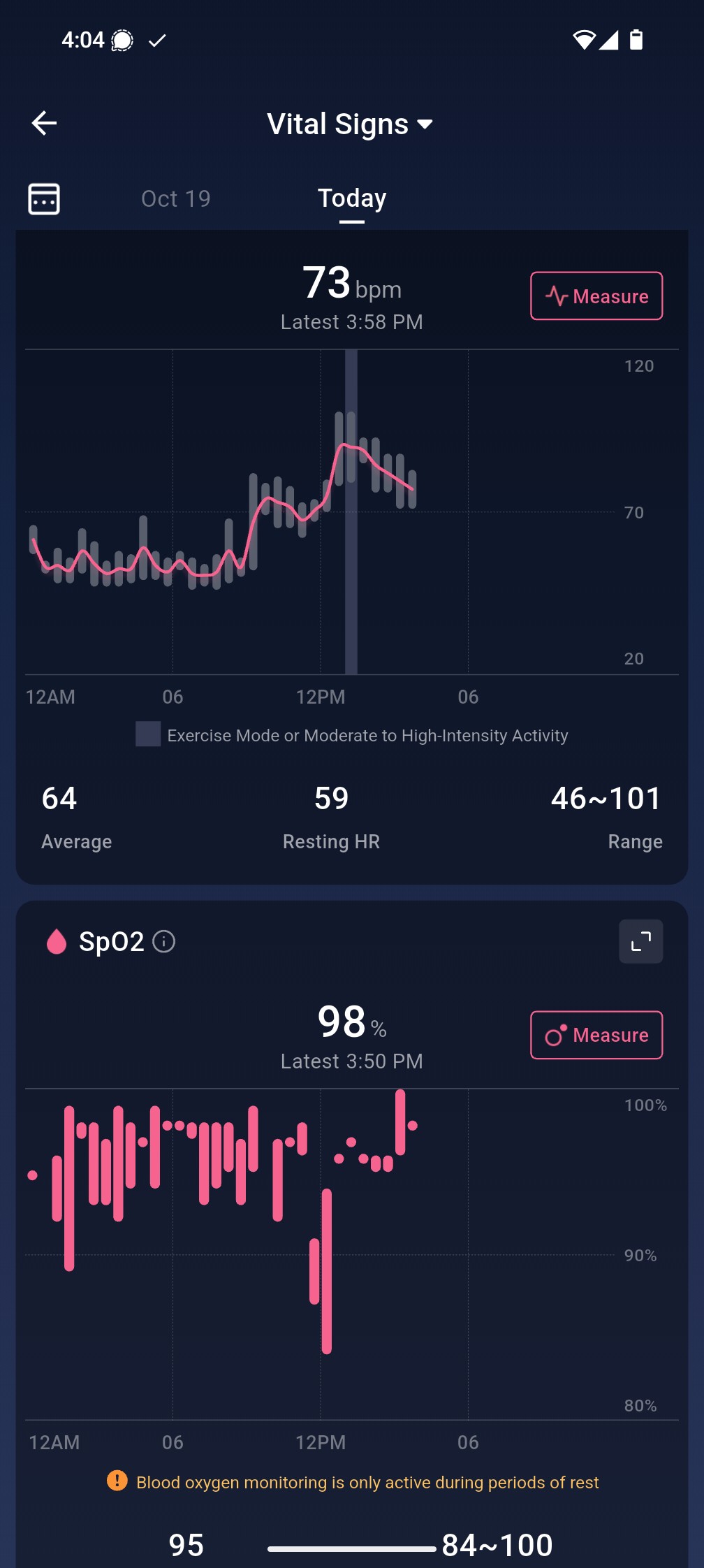
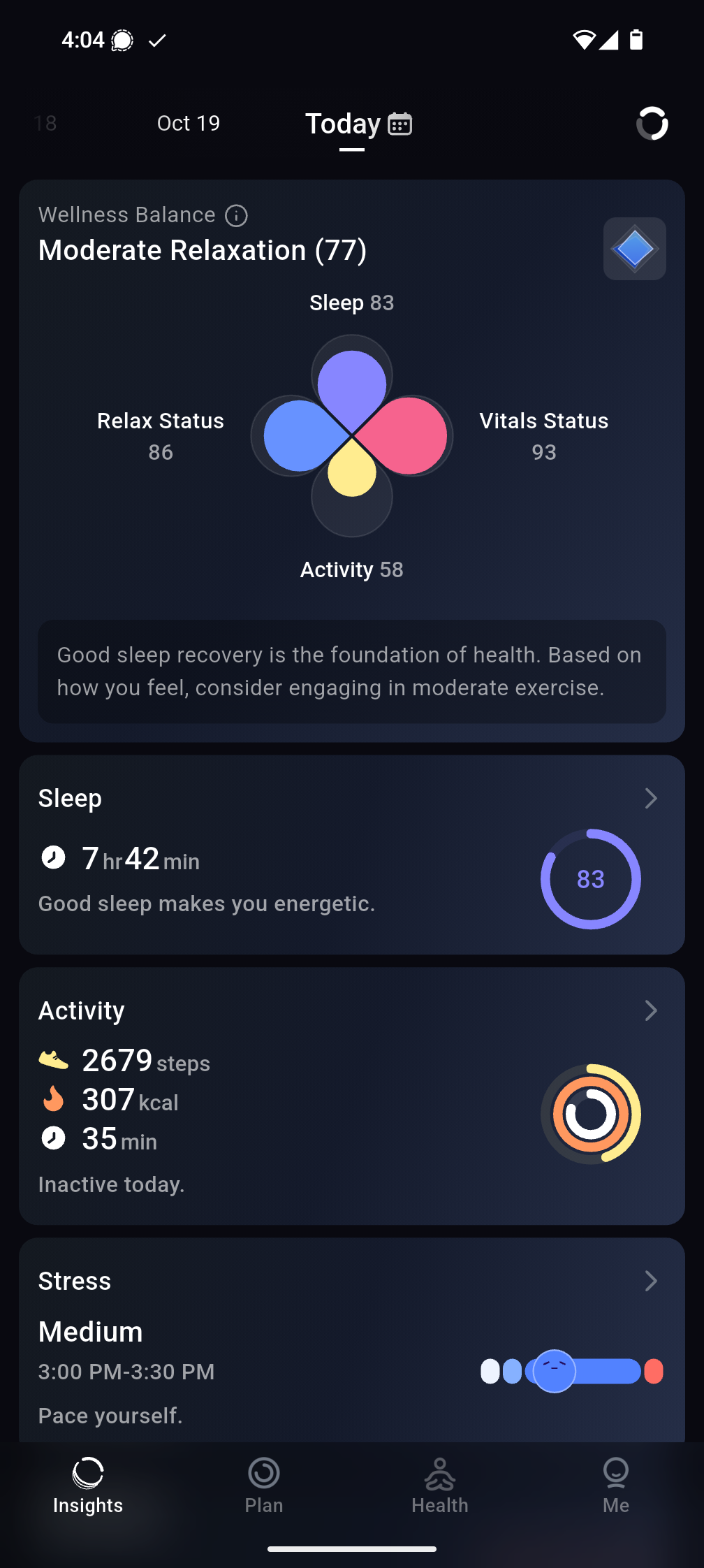
Is the RingConn Gen 2 Air Compatible with iOS and Android?
Yes, the RingConn Gen 2 air syncs with both iOS and Android devices over Bluetooth. I paired it with my Samsung Galaxy phone, and the whole process took less than two minutes. The RingConn app is available on both the Apple App Store and Google Play.
You can also connect it to Apple Health on iPhone or Google Fit on Android. However, you can only integrate with one platform at a time, so you’ll have to choose where you want your health data to go.
What Is the User Experience with the RingConn App?
The app is straightforward and data-rich, organized into four main dashboards: Activity, Sleep, Relaxation, and Vitals. A fifth score, the Wellness Balance, combines all these metrics to give you a single, easy-to-understand number.
It’s full of 7-day trend graphs and even includes a new AI chatbot in the “Plan” tab that offers personalized goals, though this feature is still in beta. A big quirk is that you have to sync your data manually by opening the app; there’s no background syncing. This helps save battery, but if you forget to sync for a few days, you could lose data.
While the interface isn’t as polished as Oura’s, it’s very functional. For security-conscious geeks, all your data is encrypted and stored on AWS servers.
Pros of RingConn Gen 2 Air
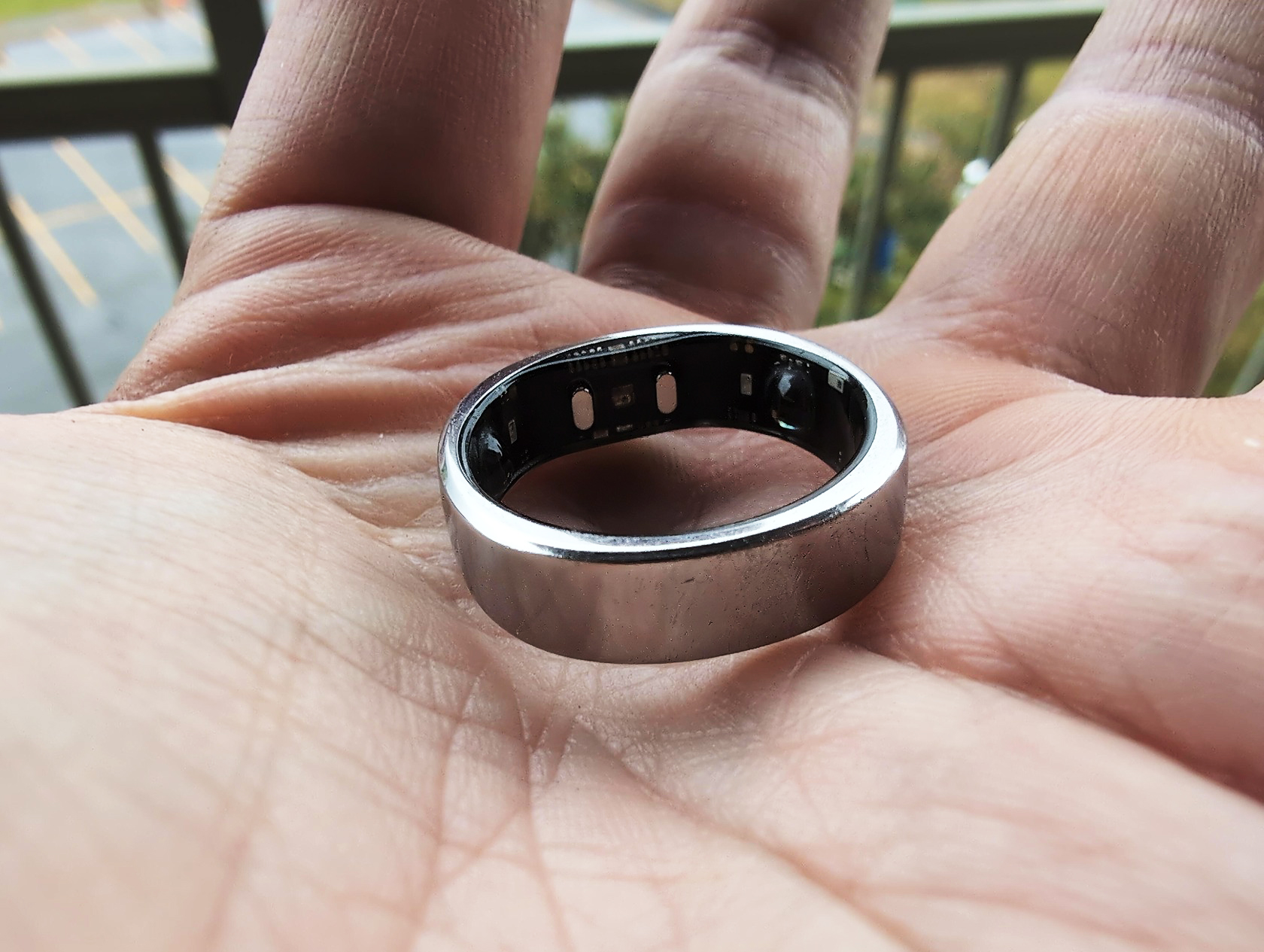
The RingConn Gen 2 Air really stands out for its incredible value. It delivers on comfort, long battery life, and accurate core health tracking without the hefty price tag or monthly fees of its rivals.
Why Is the Pricing Affordable?
At just $199, the Ringconn Gen 2 Air is a steal. It’s $100 cheaper than its big brother, the Gen 2, and significantly undercuts both the Oura Ring 4 ($349) and the Samsung Galaxy Ring ($399). I even found a $30 discount code by signing up for their newsletter.
This price puts it in direct competition with the Amazfit Helios Ring, which also costs $199. For geeks wanting to dip their toes into the world of smart rings without a major financial commitment, the Gen 2 Air is one of the best entry points in 2025.
Are There Any Subscription Fees?
Nope! This is one of its biggest selling points. You buy the RingConn Gen 2 Air, and you get full access to all its features and data insights forever. There are zero hidden costs or monthly fees.
In contrast, the Oura Ring 4 requires a $5.99 monthly membership to access most of its data analysis. Over two years, that’s an extra $144 you’re not spending with RingConn. This subscription-free smart ring model makes it a fantastic long-term value.
How Good Is the Battery Life?
The battery life is exceptional. As mentioned, it’s rated for up to 10 days, and real-world use confirms it lasts over a week, easily hitting 8-10 days between charges. This is a huge leap from the original RingConn’s 7-day max and beats most of the competition.
This makes it ideal for uninterrupted sleep tracking. You can go on a week-long trip and not even have to pack the charger. The lack of background syncing helps extend the battery even further, making it a reliable companion for anyone who hates constantly charging their gadgets.
How Comfortable Is the Design?
The ring is designed for 24/7 wear. Weighing only 2.5 to 4 grams, you barely feel it on your finger. Its slim profile means it doesn’t snag on pockets or feel bulky when you’re typing. The inner lining is a smooth epoxy resin, so even the sensor bump doesn’t cause irritation.
Using the included sizing kit is key to ensuring a perfect fit, which is crucial for both comfort and data accuracy. Most users find it fits best on the index or middle finger, where it provides accurate readings without getting in the way.
Cons of RingConn Gen 2 Air

Of course, no gadget is perfect. The Gen 2 Air makes a few compromises to achieve its budget-friendly price point, and some of them might be deal-breakers for certain geeks.
Is It Heavier Than the Gen 2 Model?
Yes, and it’s a bit ironic. Despite being called the “Air,” it’s actually heavier than the standard RingConn Gen 2 model. The Gen 2 Air weighs between 2.5 and 4 grams, while the Gen 2 is lighter at 2 to 3 grams.
This is because the Air is made of stainless steel, whereas the pricier Gen 2 uses aerospace-grade titanium, a lighter and tougher material. While it’s still lighter than the Oura Ring 4, dedicated hardware fans who want the absolute lightest device might prefer the standard Gen 2.
Does It Lack Sleep Apnea Detection?
Yes, the RingConn Gen 2 Air does not have sleep apnea detection. This advanced health feature, which monitors for breathing disturbances during sleep, is exclusive to the flagship $299 Gen 2 model.
This was a deliberate choice to keep the cost down. If sleep apnea is a specific health concern for you, you’ll need to look at either the Ringconn Gen 2 or competitors like the Oura Ring 4, which do offer this kind of monitoring. For most users just looking for general sleep quality analysis, the Air’s metrics are more than enough.
How Does the RingConn Gen 2 Air Compare to Similar Products?
When you put the Gen 2 Air next to the big names like Oura and Ultrahuman, you start to see the trade-offs clearly. It’s a battle of price and battery versus premium features and polish.
How Does It Compare to the Oura Ring 4?
The Oura Ring 4 is the market leader for a reason, it offers more robust fitness tracking with automatic activity detection and deeper, AI-driven health insights. It also includes sleep apnea detection, a feature the Gen 2 Air lacks. However, this all comes at a cost: $349 for the ring plus a $5.99 monthly subscription.
The Gen 2 Air wins on three key points: price (it’s $150 cheaper upfront with no fees), battery life (8-10 days vs. Oura’s 5-7), and weight (it’s about a gram lighter). If you want to avoid subscriptions and prioritize battery, the Gen 2 Air is a compelling alternative, though some reviews point out Oura has its own drawbacks. You can learn more by checking out these Oura Ring drawbacks.
How Does It Compare to the Ultrahuman Ring Air?
The Ultrahuman Ring Air is priced higher at $349, but like Ringconn, it has no subscription fees. Its biggest advantages are its incredibly comfortable design with a smooth interior (no sensor bump) and a more polished app with richer workout analytics.
However, the Ringconn Gen 2 Air dominates on battery life, offering nearly double the usage time (up to 10 days vs. Ultrahuman’s 5). For budget-conscious geeks who prioritize battery over advanced fitness metrics and ultimate comfort, the $199 Gen 2 Air is the clear winner. Athletes who want deeper workout data might lean toward Ultrahuman.
Should You Buy the RingConn Gen 2 Air?
So, is this the right smart ring for you? It really depends on what you’re looking for in a wearable. Let’s break down who should get it and who should probably skip it.
When Should You Buy It?
The RingConn Gen 2 Air is a fantastic choice if you fit into one of these categories.
- You’re on a budget: At $199 with no subscription fees, it offers the best value in the smart ring market.
- You hate charging devices: With a battery that lasts over a week, it’s a set-it-and-forget-it kind of gadget.
- You prioritize sleep tracking: It delivers detailed and accurate sleep stage analysis that rivals more expensive devices.
- You want the basics done right: It reliably tracks steps, heart rate, stress, and SpO2 for a great overview of your daily wellness.
- You’re new to smart rings: Its low cost and simple approach make it the perfect entry-level device to see if you like wearing a health tracker on your finger.
When Should You Avoid Buying It?
On the other hand, you might want to look at other options if these points resonate with you.
- You need sleep apnea detection: This feature is missing. You’ll need to upgrade to the Ringconn Gen 2 or an Oura Ring 4 for that.
- You’re a serious athlete: The heart rate tracking is inaccurate during intense exercise, and the workout features are very limited. A Garmin or Apple Watch is a much better fit.
- You want a seamless app experience: The need to manually sync data can be annoying, and the app isn’t as polished as its competitors.
- You need a portable charger: The lack of a charging case makes it less convenient for frequent travelers compared to the Gen 2 model.
- You want automatic workout tracking: The ring won’t automatically detect and log your workouts like devices from Fitbit or Oura do.
What is the Price and Where Can You Buy the Ringconn Gen 2 Air?
The Ringconn Gen 2 Air is priced at $199. This is a flat, one-time cost, as there are no subscription or membership fees required to use the app or access your data.
If you’re lucky, you might even snag a discount. I found a $30 off coupon by signing up for the company’s newsletter. The official launch was on April 4, 2025, and it has been readily available since.
You can buy the Gen 2 Air directly from the Ringconn website or on Amazon, which is great for Prime members looking for fast shipping.
How Will the RingConn Gen 2 Air—and Smart Rings—Change in 2025?
The smart ring market is booming, with one 2025 report projecting a market size of over $25 billion. The biggest trend I’m seeing is a push toward making these devices even more invisible and powerful.
For the RingConn, I hope future versions get even thinner. The Gen 2 Air is comfortable, but a slimmer profile would be a game-changer. Battery life will likely continue to improve across the board, with ten days becoming the new standard for budget models.
I also expect to see more advanced health features trickle down to affordable rings. Things like sleep apnea detection and more sophisticated AI wellness coaching could become standard on sub-$200 devices. As the technology gets better and cheaper, the line between a simple fitness tracker and a powerful health monitor will continue to blur, making 2025 an exciting year for wearable technology.
People Also Ask
What are the top reasons to buy the RingConn Gen 2 Air in 2025?
Its titanium steel body is feather-light at just 2.5 grams, and you get up to 10 days of battery life without a subscription fee, unlike the Oura Ring 4. It tracks all the key vitals, including sleep stages, heart rate, and SpO2 levels, giving you a solid wellness overview.
Are there any drawbacks to skipping the RingConn Gen 2 Air?
You’d miss out on a subscription-free model, but its fitness tracking is basic, with only a few workout modes and no GPS. Power users might find its app integrations with Apple Health or Google Fit less comprehensive than competitors like Ultrahuman.
How does the Gen 2 Air compare to other health rings on the market?
It’s a strong budget contender against the Oura Ring 4, offering similar core tracking for $150 less upfront and no monthly fee. However, it lacks advanced features like the sleep apnea detection found in the more expensive Ringconn Gen 2 proper.
Who should consider buying or skipping the RingConn Gen 2 Air?
Buy it if you want an affordable, comfortable ring with excellent battery life for core sleep and wellness tracking.
References
https://ringconn.com/blogs/news/ringconn-gen2-air-best-value-review
https://www.pcmag.com/reviews/ringconn-gen-2-air
https://www.facebook.com/groups/322829073580573/posts/614225947774216/
https://ringconn.com/products/ringconn-gen-2-air
https://www.amazon.com/RingConn-Ultra-Thin-Standard-Features-Compatible/dp/B0DWJTV3J5
https://www.androidheadlines.com/ringconn-gen-2-air-ultimate-review (2025-03-11)
https://mcgst.com/2025/04/27/ringconn-gen-2-air-review/ (2025-04-27)
https://www.wareable.com/health-and-wellbeing/ringconn-gen-2-air-smart-ring-announcement-release-date-price-features (2025-02-28)
https://www.facebook.com/groups/322829073580573/posts/555312843665527/
https://www.facebook.com/groups/322829073580573/posts/516637534199725/
